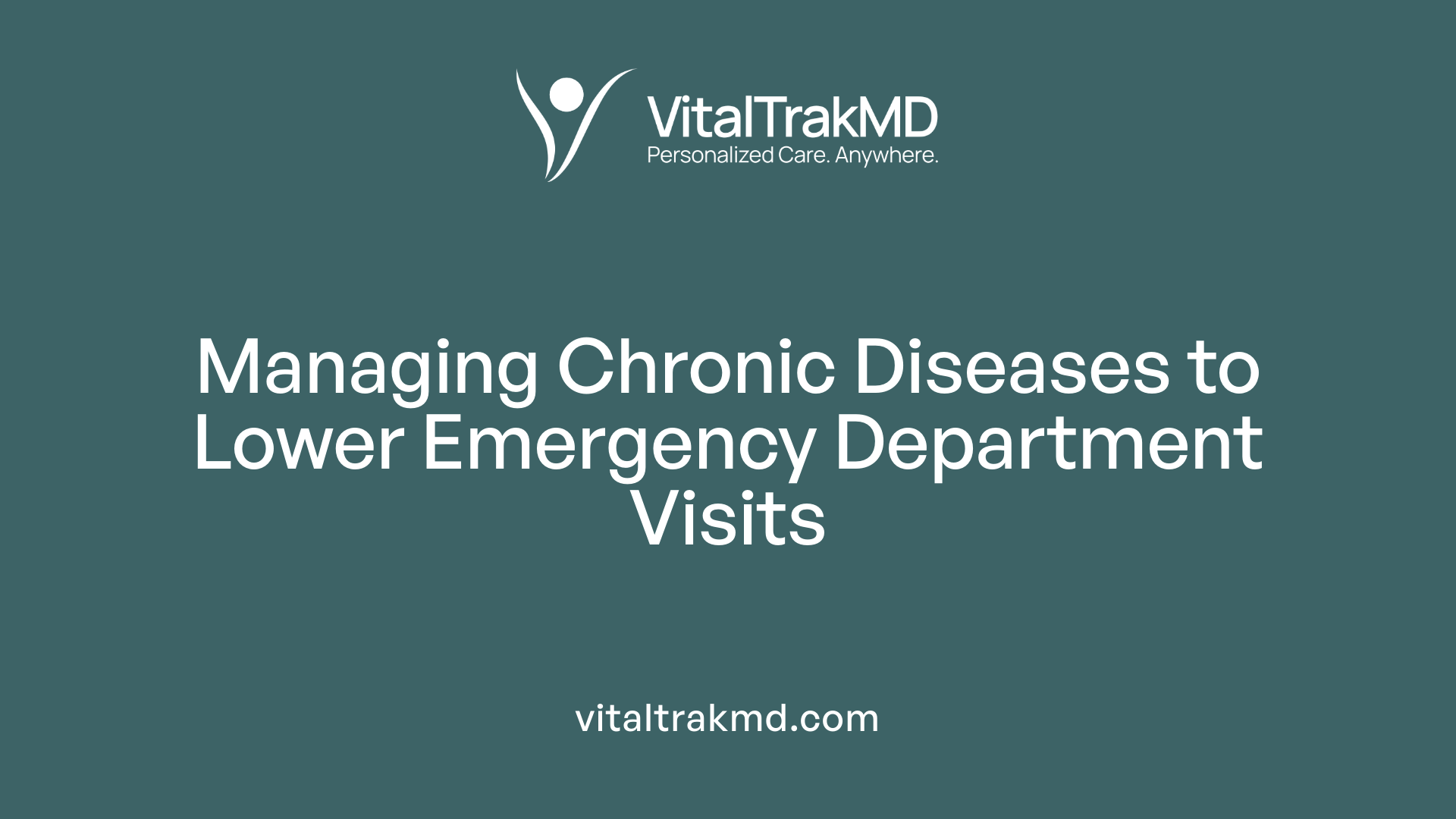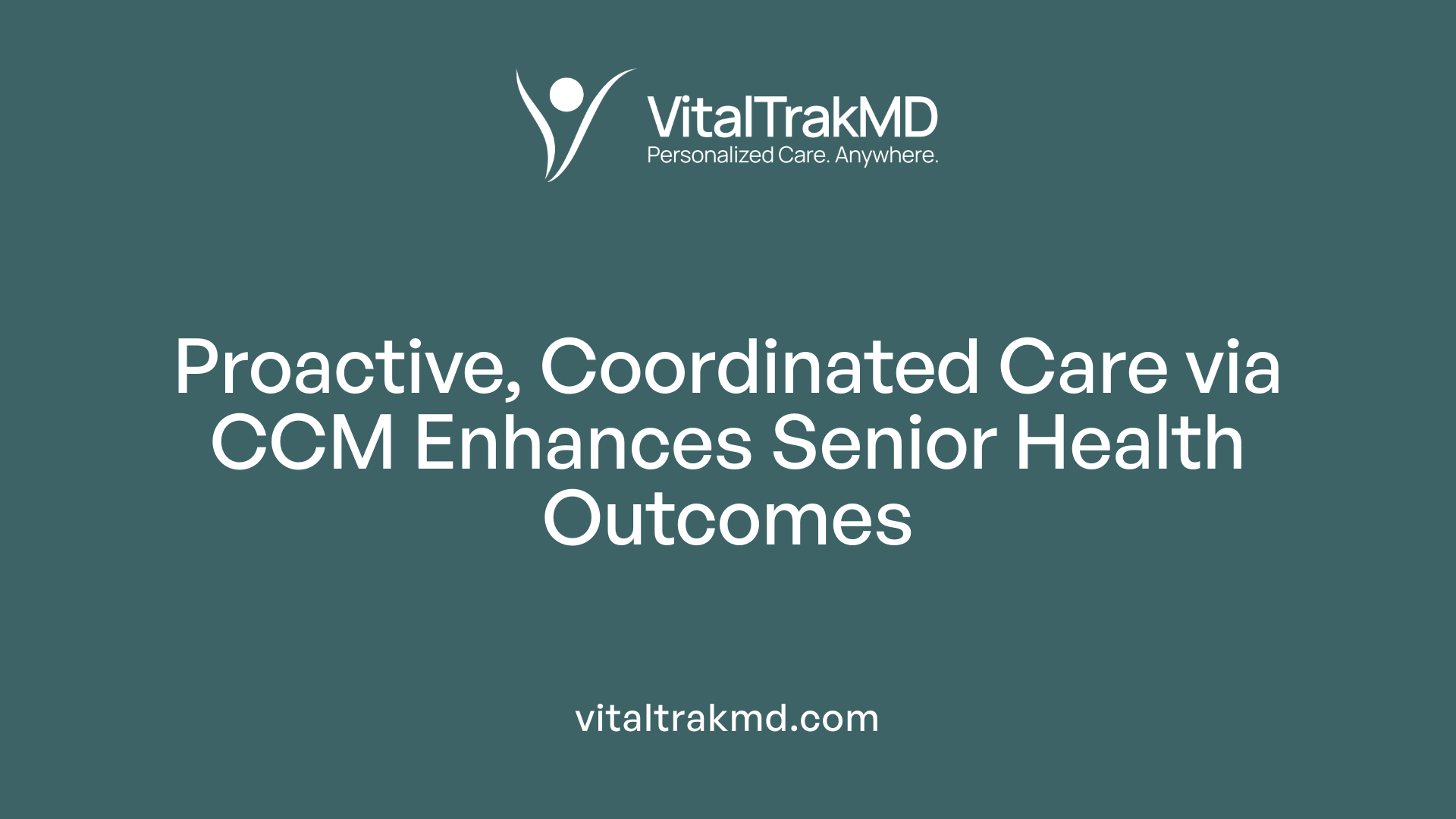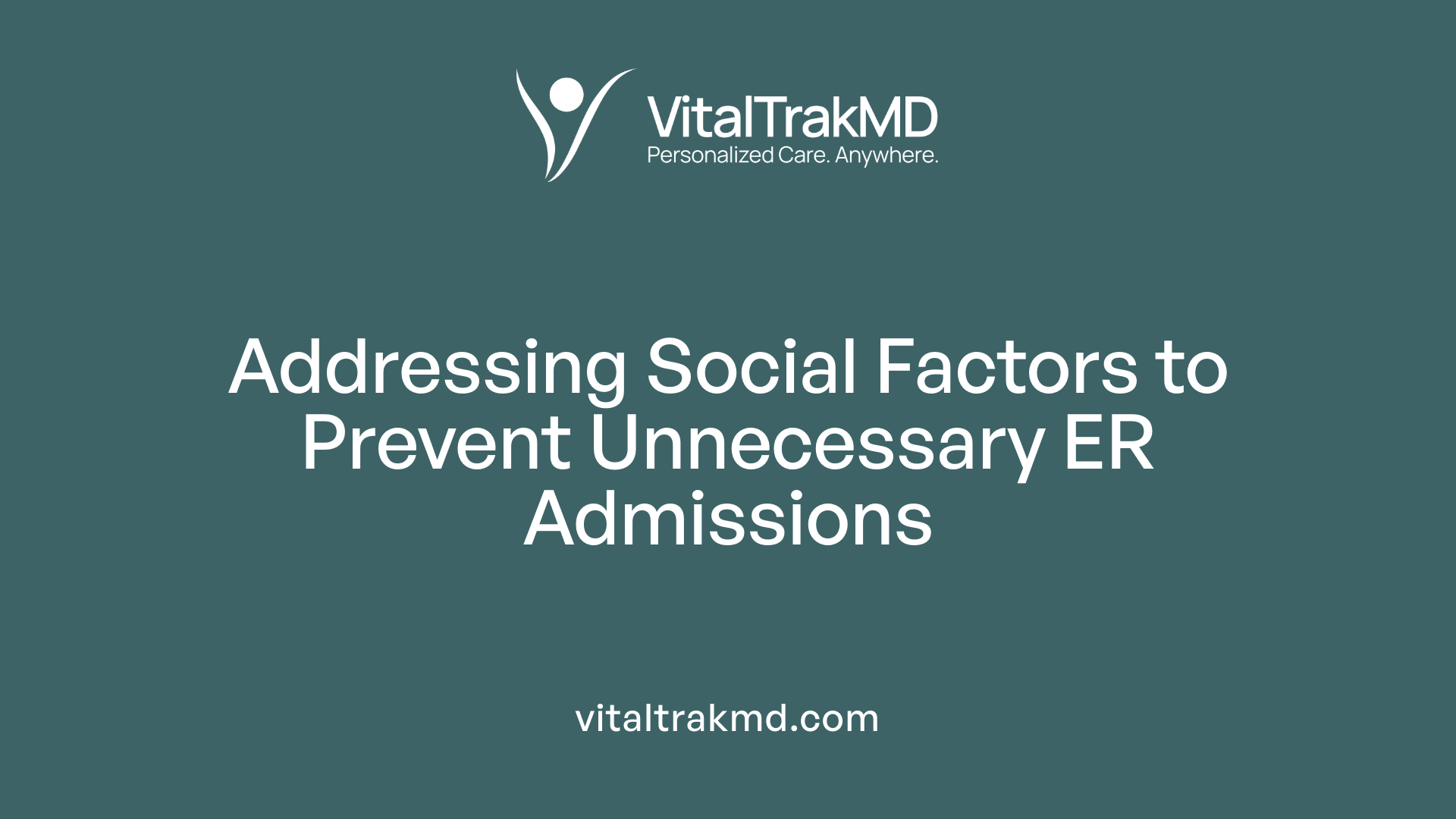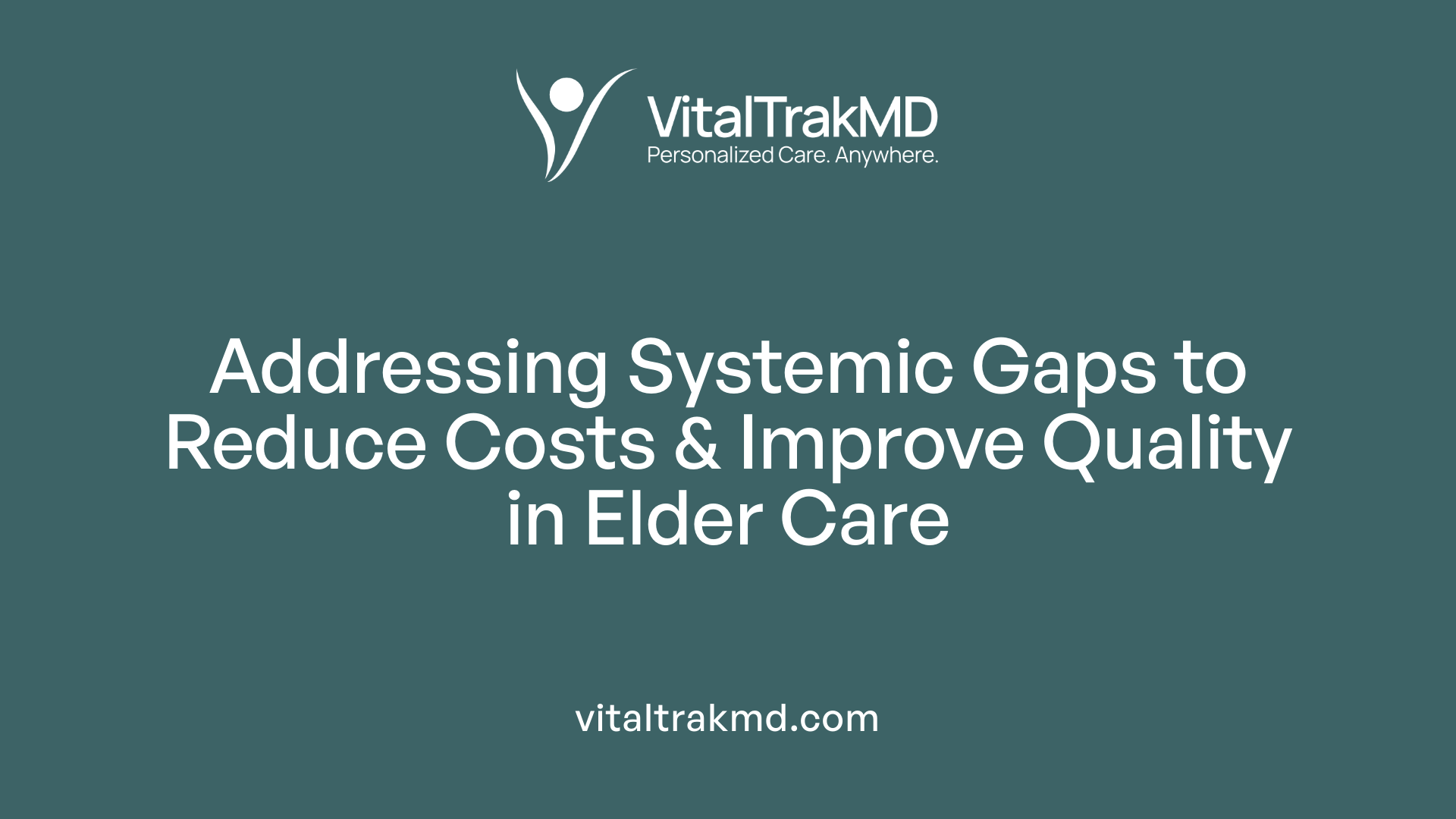How Gaps in Chronic Care Management Increase ER Visits Among Seniors

Understanding the Role of Care Gaps in Senior Emergency Healthcare Utilization
As the senior population continues to grow, so does the strain on emergency departments (EDs). A significant driver of this trend is the prevalence of gaps in chronic care management, which lead to preventable complications and emergency visits. This article explores how these care gaps influence ER utilization among seniors, the underlying causes, and effective strategies to bridge these gaps, ultimately aiming to improve health outcomes and reduce healthcare costs.
The Impact of Chronic Conditions and Care Gaps on ER Visits

What is the prevalence of multiple chronic conditions among seniors?
Chronic diseases are exceedingly common among older adults, with about 95% of individuals aged 65 and older affected by at least one chronic condition. Nearly 80% of seniors live with two or more chronic illnesses, a situation often referred to as multiple chronic conditions (MCCs). As the population continues to age, especially those over 85, the number of seniors managing multiple health issues is expected to increase dramatically.
This rise in MCCs significantly impacts both individual health and the healthcare system. Patients with MCCs face higher risks of disability, mortality, and healthcare costs. Managing complex medication regimens, frequent doctor visits, and ongoing treatment plans can become overwhelming for patients and providers alike.
| Age Group | Percentage with MCCs | Common Conditions | Impact on Healthcare |
|---|---|---|---|
| 65–74 | 70% | Hypertension, Diabetes, Arthritis | Increased clinic visits, medication management |
| 75–84 | 80% | Heart Disease, COPD | Higher hospitalization rates |
| 85+ | Over 90% | Dementia, Parkinson’s | Greater need for long-term care |
This widespread prevalence underscores the urgent need for effective management strategies to prevent complications and reduce emergency visits.
The Advantages of Care Models like CCM in Elderly Patient Management

What role does care models like the Chronic Care Model (CCM) play in preventing unnecessary ER visits among older adults?
Care models such as the Chronic Care Model (CCM) are instrumental in reducing preventable emergency room (ER) visits among the elderly by emphasizing proactive and coordinated care. These models focus on empowering patients through self-management support, which includes personalized education tailored to literacy, language, and cultural backgrounds. This helps seniors better understand and manage their conditions.
Continuous monitoring, often facilitated by remote patient monitoring (RPM) technologies, allows healthcare teams to track vital signs and other health indicators in real time. This early detection of potential problems enables timely intervention, preventing complications from worsening to the point of requiring emergency care.
Furthermore, CCM encourages collaboration among healthcare providers, community resources, and social services to address social determinants of health — factors like transportation, housing, and social support that influence health outcomes. By reducing care fragmentation and uncoordinated treatments, these models can significantly lower the frequency of avoidable hospital visits.
Implementing strategies like telehealth consultations, personalized care plans, and data sharing among providers enhance overall patient engagement and adherence. Although the impact of CCM on population-level ER visit reduction requires further research, current evidence strongly supports its role in improving health management for seniors, ultimately leading to fewer emergency incidents and healthier aging.
How does the CCM framework help close care gaps and improve health outcomes?
The CCM framework systematically addresses care gaps by integrating a comprehensive approach that combines personalized care plans, ongoing monitoring, and team-based interventions. This shift from reactive to preventive care allows healthcare providers to identify and treat health issues early before they escalate.
A core element of CCM is fostering continuous patient engagement through education and self-management support. Patients are empowered to recognize symptoms, adhere to medications, and participate actively in their care, which is crucial for managing chronic conditions such as diabetes, hypertension, and MCCs.
Technology integration plays a vital role within CCM. Electronic health records (EHRs) enable seamless information sharing, ensuring that every provider is aware of the patient's latest health status and care actions. Predictive analytics help identify at-risk individuals who might otherwise be overlooked.
Programs like Wellbox exemplify CCM principles by offering nurse-led care management that includes regular check-ins, medication reconciliation, and practical support like transportation. Such interventions have demonstrated impressive results, with reductions of up to 70% in emergency health utilization and doubled completion rates of preventative services like vaccinations.
Ultimately, CCM's structured approach leads to improved health outcomes by preventing complications, reducing hospitalizations, and enhancing quality of life for seniors. These programs statistically improve care coordination, patient satisfaction, and long-term health management.
| Element | Description | Benefits |
|---|---|---|
| Proactive Care | Regular monitoring and early intervention | Reduces emergency complications |
| Patient Engagement | Education and self-management support | Improves adherence and symptom recognition |
| Technology Use | EHRs, predictive analytics, RPM | Facilitates timely interventions and reduces errors |
| Care Coordination | Team-based approach involving multiple providers and resources | Ensures continuity and comprehensive management |
| Social Determinants | Addressing factors like transportation, housing, and social support | Increases access and reduces preventable crises |
This interconnected framework thus not only closes care gaps but also fosters healthier aging through sustained support and coordination.
Social Determinants and Their Influence on Emergency Visits

How do social needs and care coordination influence ER visit rates among seniors with chronic conditions?
Social requirements such as socioeconomic status, social support networks, and access to healthcare services deeply impact the frequency of emergency department (ED) visits among older adults living with chronic conditions. Seniors facing economic hardships, limited education, or social isolation are more prone to experience unmet social needs, which often lead to poorly managed health issues and escalate to emergency situations.
Effective care coordination plays a vital role in addressing these challenges. When care management is fragmented, patients may receive conflicting advice, miss necessary follow-ups, or lack sufficient support for medication adherence. These gaps increase the likelihood of complications that require urgent attention.
Racial and ethnic disparities further complicate this scenario. Minority seniors frequently encounter more confusion, conflicting medical advice, and limited engagement from healthcare providers, all of which contribute to higher ED utilization. To reduce unnecessary ER visits, it is essential to adopt comprehensive strategies that consider social determinants.
Enhanced care coordination models, which include social support systems, culturally sensitive care plans, and systematic identification of unmet social needs, can bridge these gaps. Implementing personalized approaches ensures that social vulnerabilities are recognized and addressed proactively, resulting in fewer preventable emergency visits and better overall health outcomes for seniors with chronic illnesses.
What strategies can address social and structural barriers to reduce ER utilization?
Addressing social and structural barriers requires an integrated approach combining healthcare services with social support mechanisms. Deploying community health workers who understand local social contexts allows targeted outreach and assistance tailored to individual needs.
Providing accessible transportation options for medical appointments significantly reduces missed visits, which are often precursors to emergency episodes. Developing personalized care plans that incorporate social determinants ensures that healthcare providers are aware of factors like housing stability, food insecurity, and social isolation.
Effective communication channels between healthcare providers and social service agencies are crucial. Routine screening during medical visits for unmet social needs enables early intervention and resource linkage.
Furthermore, enhancing health literacy through education tailored to different cultural and language backgrounds empowers seniors to manage their conditions better, reducing emergency care reliance. Policy reforms aimed at expanding healthcare access and funding for social services are essential to sustain these efforts.
Creating an environment where social determinants are systematically recognized and managed fosters proactive care, decreases avoidable ER visits, and improves the quality of life for elderly populations.
| Aspect | Strategies | Outcomes | Additional Details |
|---|---|---|---|
| Social Support | Deploy community health workers | Better outreach & support | Personal interactions improve engagement |
| Transportation | Establish transit programs for medical visits | Fewer missed appointments | Critical for rural or mobility-limited seniors |
| Care Planning | Include social needs assessment | Tailored interventions | Reduces health crises & emergency visits |
| Education | Promote health literacy | Improved self-management | Especially in diverse linguistic groups |
| Policy & Access | Expand healthcare coverage & social services | Increased accessibility | Addresses systemic barriers & disparities |
Addressing these social determinants and structural barriers in a coordinated manner can significantly reduce ER visits among seniors, especially those managing complex chronic conditions. By focusing on comprehensive, culturally sensitive, and accessible care, health systems can improve outcomes while decreasing unnecessary emergency healthcare utilization.
Healthcare System Challenges and the Cost of Care Gaps

What are the healthcare system impacts and cost implications of gaps in chronic care management?
Gaps in chronic care management significantly impact the overall healthcare system by increasing costs and diminishing care quality. When chronic conditions are not properly managed, patients are more likely to experience exacerbations that require costly interventions such as hospitalizations and emergency department (ED) visits. These unnecessary visits strain hospital resources, increase diagnostic testing, and lead to the use of excessive procedures.
Care fragmentation and poor coordination among healthcare providers contribute to adverse outcomes, including medication errors, readmissions, and conflicting treatment advice. Such issues exacerbate health complications, elevate costs, and compromise patient safety. Systemic issues like workforce shortages, insufficient reimbursement models, and supply chain disruptions further hinder effective chronic disease management. These systemic failures threaten hospital financial stability and decrease the overall quality of care.
Implementing comprehensive care management strategies—like telehealth programs, nurse-led disease management, and integrated health records—has proven effective in reducing hospitalizations and improving health outcomes. These initiatives promote continuity of care, reduce unnecessary emergency visits, and contain expenditures.
Overall, addressing gaps in chronic care management is critical to optimize healthcare system performance. It helps reduce unnecessary expenditures, improves patient outcomes, and promotes a more efficient, equitable, and patient-centered healthcare environment.
What practices can be employed to decrease ED visits due to systemic failures?
Reducing emergency department visits caused by systemic issues involves multiple proactive strategies. Increasing access to primary and specialist care through expanded clinics, telehealth, and remote monitoring tools allows for earlier intervention before health issues escalate.
Enhancing care transition protocols ensures smooth handoffs between hospitals, outpatient clinics, and community services, preventing gaps that lead to avoidable ED visits.
Training programs for paramedics and emergency responders are essential in guiding suitable patients to appropriate subacute or urgent care facilities, thereby reducing ED overcrowding.
Reforming reimbursement policies to reward continuous and comprehensive patient management rather than episodic treatment encourages healthcare providers to prioritize preventive care.
Investing in community-based and integrated care models fosters collaboration among different healthcare entities, ensuring patients receive holistic support.
Predictive analytics and risk stratification tools help identify high-risk patients who may benefit from targeted interventions, making proactive care more effective.
Together, these practices create a more resilient and responsive healthcare system that can address systemic shortcomings. As a result, avoidable emergency visits decrease, and patient care improves.
| Practice | Description | Expected Impact |
|---|---|---|
| Expand Primary and Specialty Care Access | Use telehealth, urgent care, and outreach programs | Reduce delays and prevent worsening of chronic conditions |
| Improve Care Transition Protocols | Standardize procedures for patient handoffs | Minimize care gaps and readmissions |
| Provider Education and Training | Equip paramedics to route patients correctly | Decrease unnecessary ER utilization |
| Reimbursement Restructuring | Incentivize continuous care over episodic treatment | Promote proactive management |
| Community-Based Care Models | Foster collaboration among local providers | Support holistic patient care |
| Predictive Analytics and Risk Stratification | Use data to identify high-risk patients | Enable targeted prevention efforts |
Addressing systemic issues with these strategies offers a pathway toward a more efficient, cost-effective healthcare system that better serves the needs of the aging population while reducing avoidable emergency care.
More insights can be found by searching for "cost efficiency and systemic solutions in elder care ER reduction" to explore the intersection of systemic reforms and emergency care reduction efforts.
This comprehensive approach underscores the importance of integrated care, innovative practices, and policy reforms to mitigate the financial and operational burdens caused by care gaps, ultimately leading to better health outcomes and organizational efficiency.
Future Directions and Innovative Solutions to Reduce ER Visits

How can improving chronic care management alleviate ED overcrowding and healthcare costs for seniors?
Enhancing chronic care management (CCM) strategies plays a crucial role in reducing unnecessary emergency department (ED) visits among older adults. When seniors with multiple chronic conditions receive proactive, continuous care, the likelihood of symptom escalation and complications diminishes. This not only prevents avoidable ED visits but also improves overall health outcomes.
Effective CCM involves personalized care plans that consider social, cultural, and individual factors. These plans enable healthcare providers to identify and address potential issues early before they require emergency intervention. Care models such as geriatric emergency departments, transitional units, and community-based programs facilitate seamless care transitions and focus on early diagnostics and preventive measures.
Technology innovations greatly enhance these efforts. Telemedicine allows patients to consult providers remotely, reducing barriers such as transportation and mobility issues. Remote patient monitoring (RPM) gathers real-time data on vital signs like blood pressure, glucose levels, and weight, alerting clinicians to potential problems promptly. These digital tools support timely adjustments to treatment plans, minimizing the chances of health deteriorations that lead to ED visits.
Combining care coordination, technological tools, and novel service models leads to better health management. Patients experience fewer crises, and healthcare systems benefit from lower costs associated with hospital stays and emergency services. This integrated approach reduces ED overcrowding and supports sustainable healthcare delivery for aging populations.
What are some emerging care models and interventions?
Innovative healthcare models are emerging to meet the complex needs of seniors with chronic conditions. These include:
- Geriatric Emergency Departments: Specialized units designed to provide elder-friendly, coordinated care, reducing hospital admissions and improving patient outcomes.
- Transitional Care Units: Focused on smooth discharge planning and follow-up, these units help prevent readmissions and manage chronic conditions effectively.
- Community-Integrated Care: Engaging local resources, home health visits, and social supports to address social determinants of health that impact disease management.
Interventions such as nurse-led care management programs provide regular check-ins, medication reconciliation, and symptom management, which have shown to reduce hospitalizations and ED visits.
Moreover, advancing telehealth services—not just for consultations but also for remote patient monitoring and asynchronous data sharing—ensures high-risk patients receive continuous care outside traditional settings. These models promote early detection of issues, personalized interventions, and patient empowerment.
Charting the path forward
To further reduce ED overcrowding, healthcare systems need to adopt a multi-faceted approach. Investing in technology, expanding innovative care models, and enhancing care coordination are vital steps. Policies should encourage widespread implementation of telehealth platforms, RPM, and integrated care networks.
Additionally, addressing social determinants like transportation, housing, and social support will bolster efforts to manage chronic conditions proactively.
Ultimately, these strategies aim to transform healthcare delivery into a more coordinated, accessible, and patient-centered system—reducing unnecessary ED visits, improving elderly health outcomes, and controlling escalating healthcare costs.
| Strategy | Description | Expected Impact |
|---|---|---|
| Telemedicine | Remote consultations, follow-ups, asynchronous data sharing | Increased access, reduced barriers, timely care |
| Remote Patient Monitoring | Continuous physiological data collection for early problem detection | Early intervention, fewer crises, fewer ED visits |
| Specialized Geriatric EDs | Elder-friendly emergency care units | Improved patient outcomes, fewer hospitalizations |
| Community-Based Interventions | Neighborhood health programs, home visits, social support | Addressing social determinants, preventive care |
| Nurse-Led Care Management | Regular check-ins, medication management, symptom monitoring | Reduced hospitalizations and ED visits |
The integration of these approaches promises a future where emergency care is reserved for truly urgent cases, and seniors receive comprehensive, continuous support that maintains their health and independence.
Bridging the Care Gaps for a Healthier Senior Population
The rising rate of emergency visits among seniors underscores the urgent need to address the pervasive gaps in chronic care management. Strengthening care coordination, expanding access to comprehensive services, and leveraging innovative models like CCM, telehealth, and community-based initiatives are critical steps toward reducing preventable ER visits. By tackling social determinants of health and systemic barriers, healthcare providers can improve outcomes, lower costs, and alleviate ED overcrowding. Embracing these strategies not only benefits individual seniors but also enhances the sustainability and resilience of the healthcare system as a whole. As we look to the future, integrating technology, policy reform, and patient-centered care will be vital in closing the care gaps that jeopardize the health of our aging population.
References
- Using Chronic Care Management Visits to Reduce the Number of ...
- Healthcare on the brink: navigating the challenges of an aging ...
- Understanding and Closing Care Gaps: The Critical Role of Chronic ...
- Emergency department and inpatient utilization among U.S. older ...
- Enhancing Chronic Care Management through Value-Based Models
- From Every Angle: Emergency Department overcrowding - Vizient Inc.
- How Telehealth Improves Chronic Care Management & Outcomes
Recent articles
Want to Feel Better and Live Healthier?
Join hundreds of patients taking control of their health with personalized care that fits their life – not the other way around.
Rated 4.8/5 by 32+ customers







